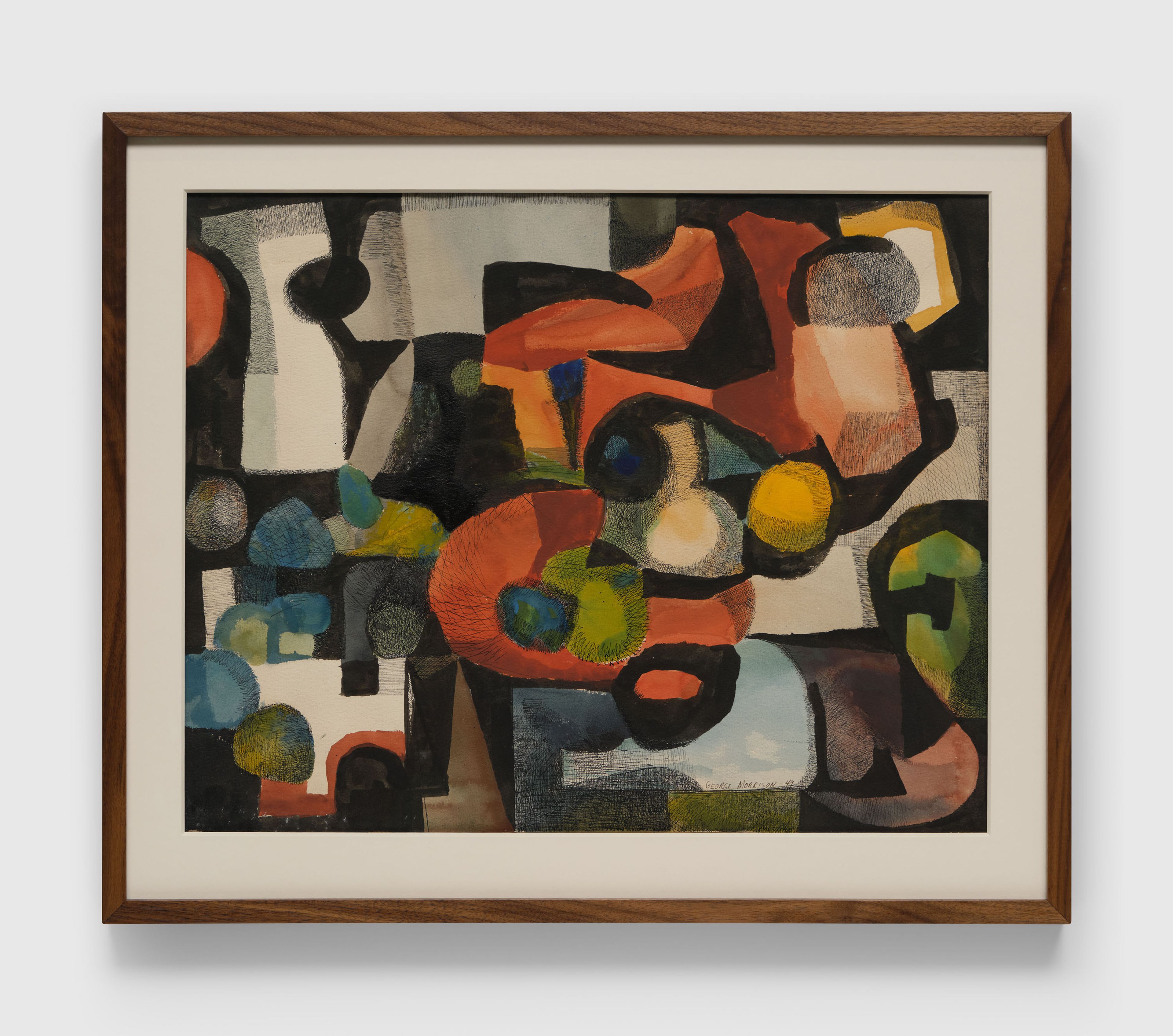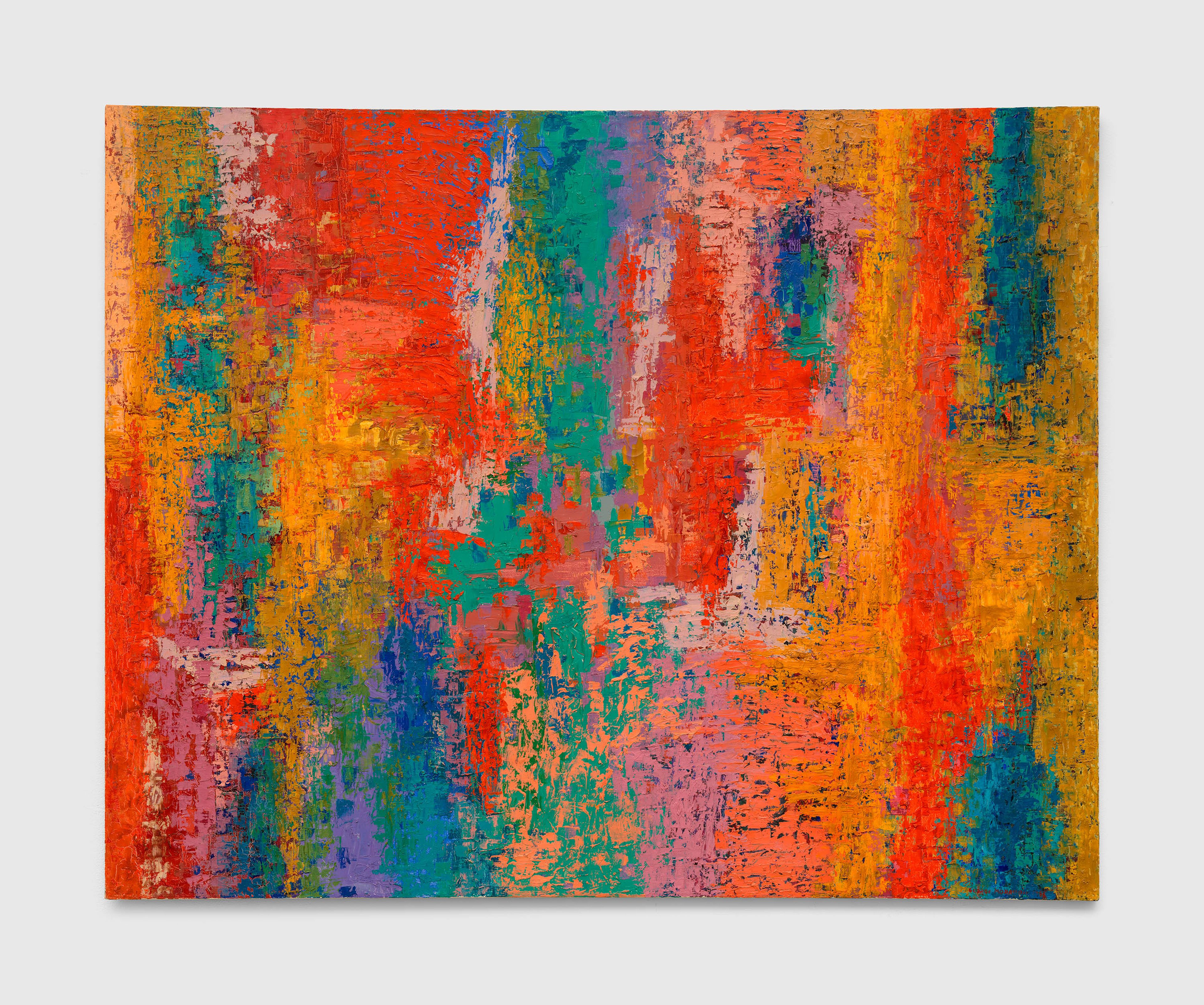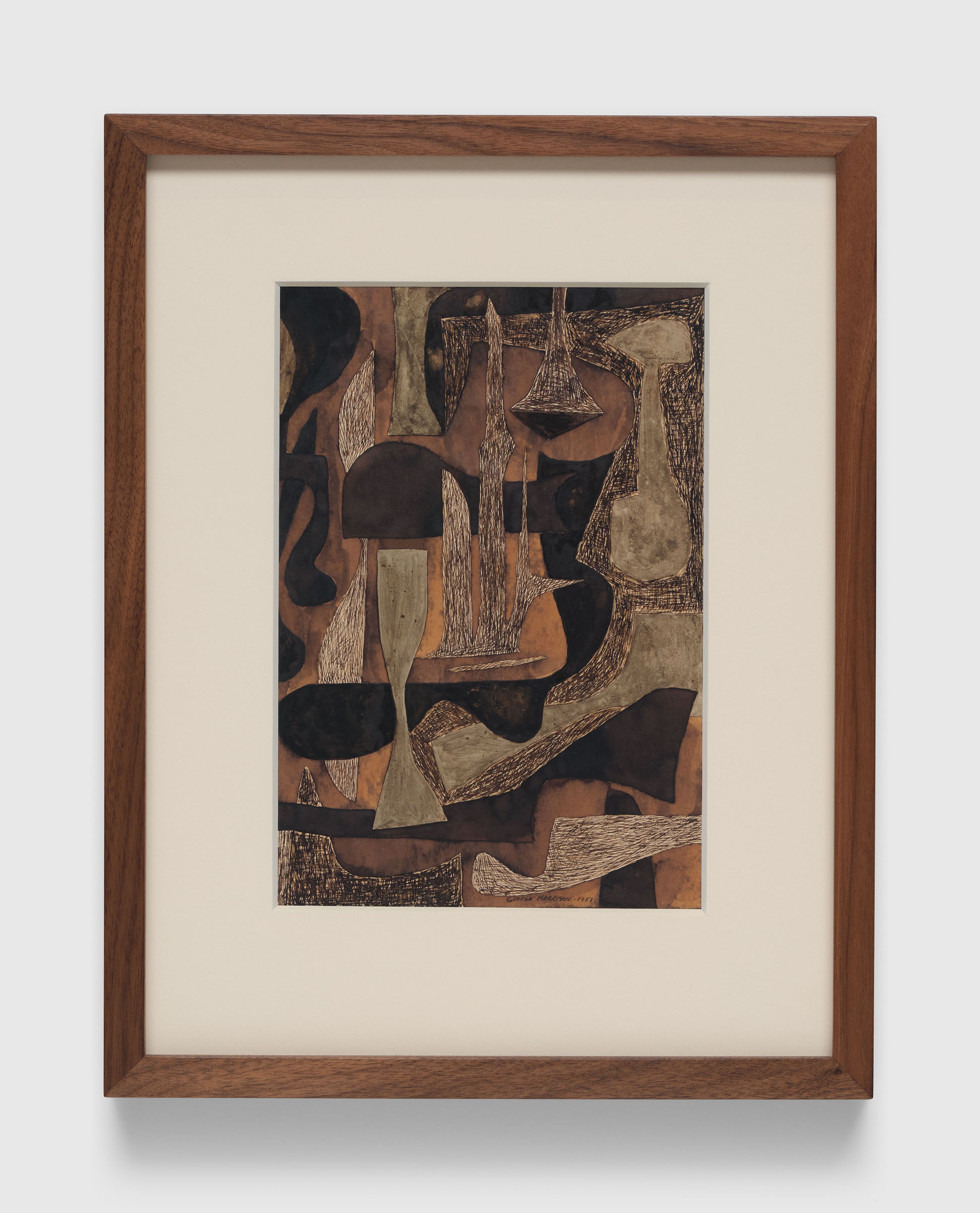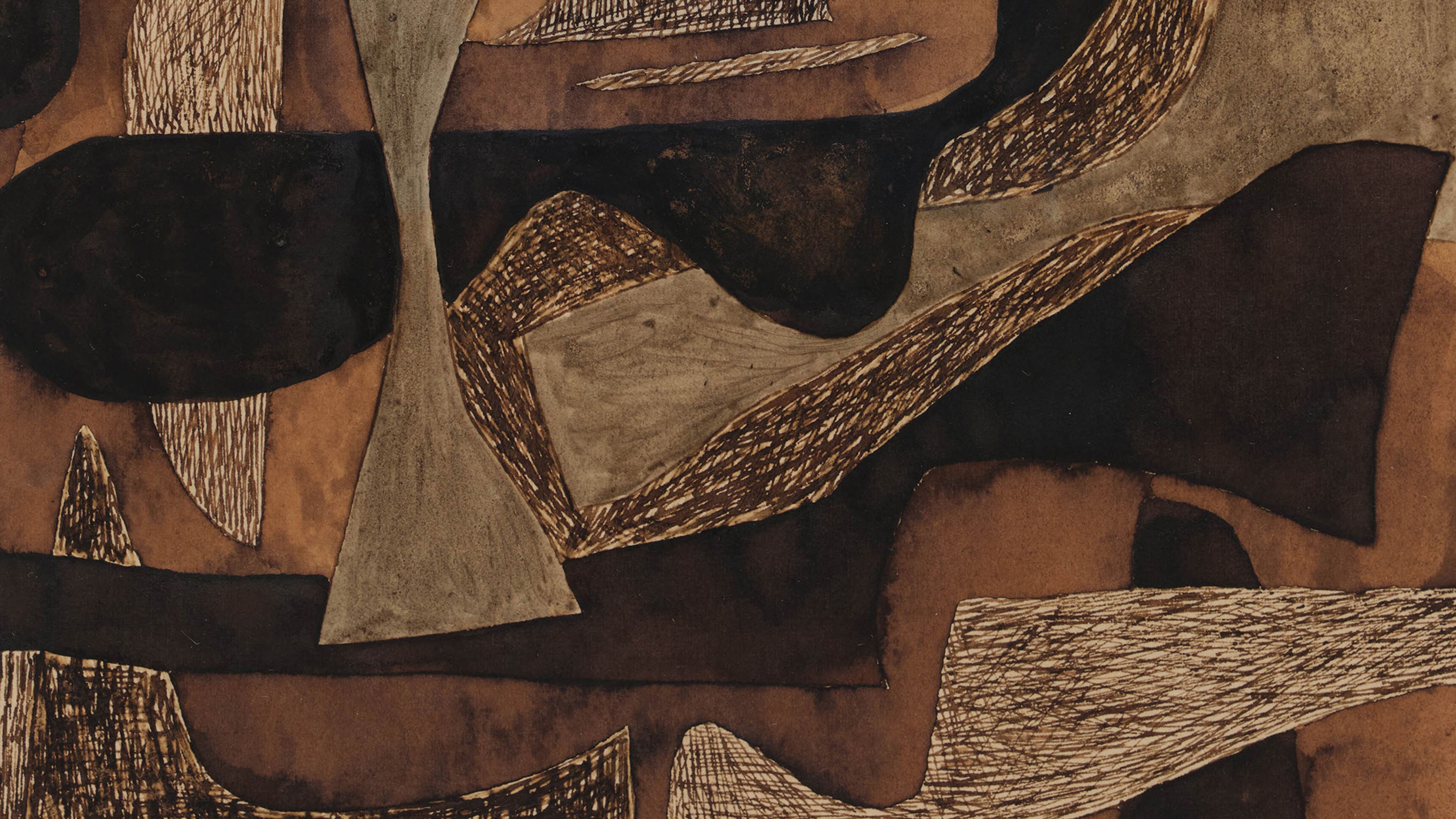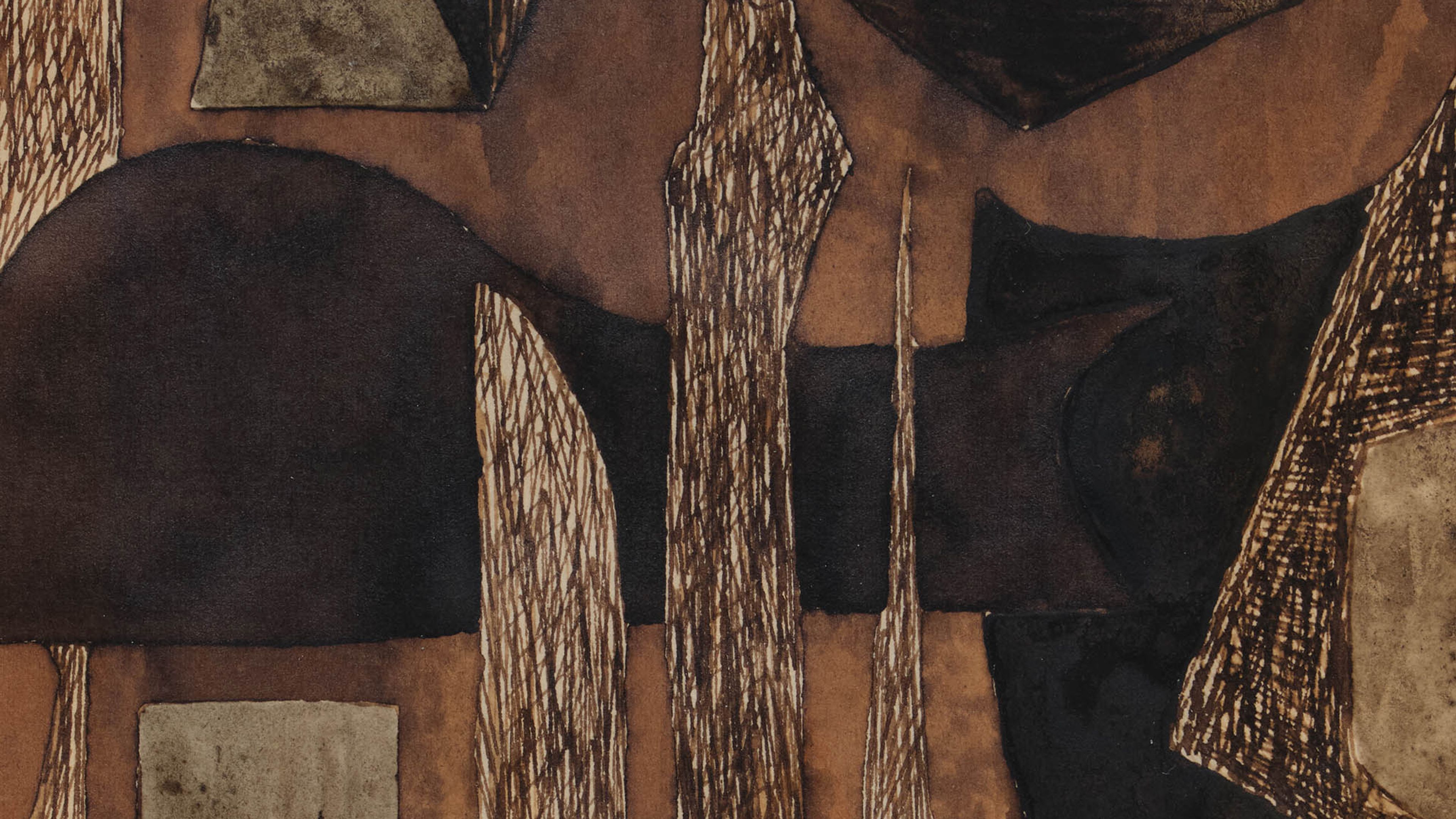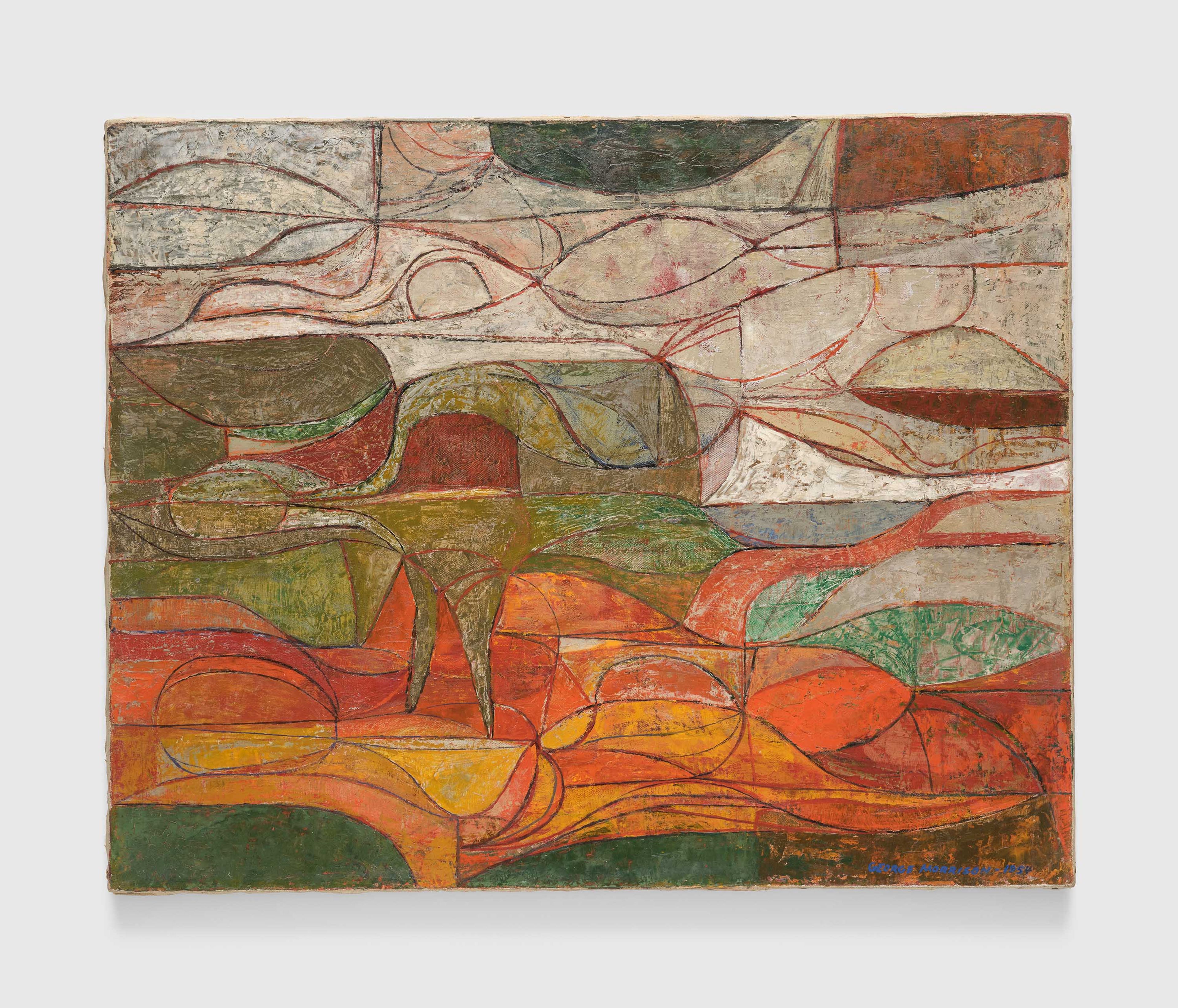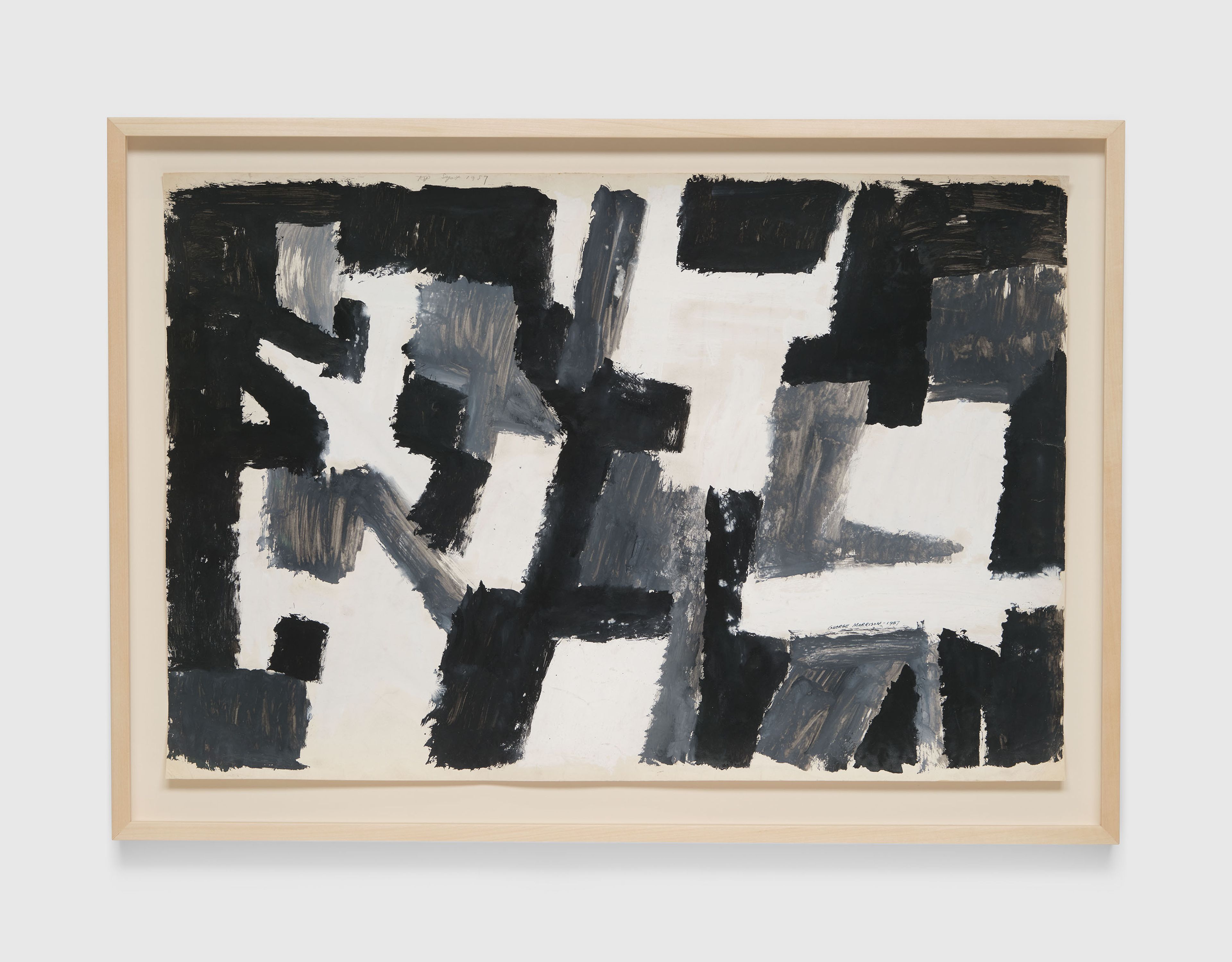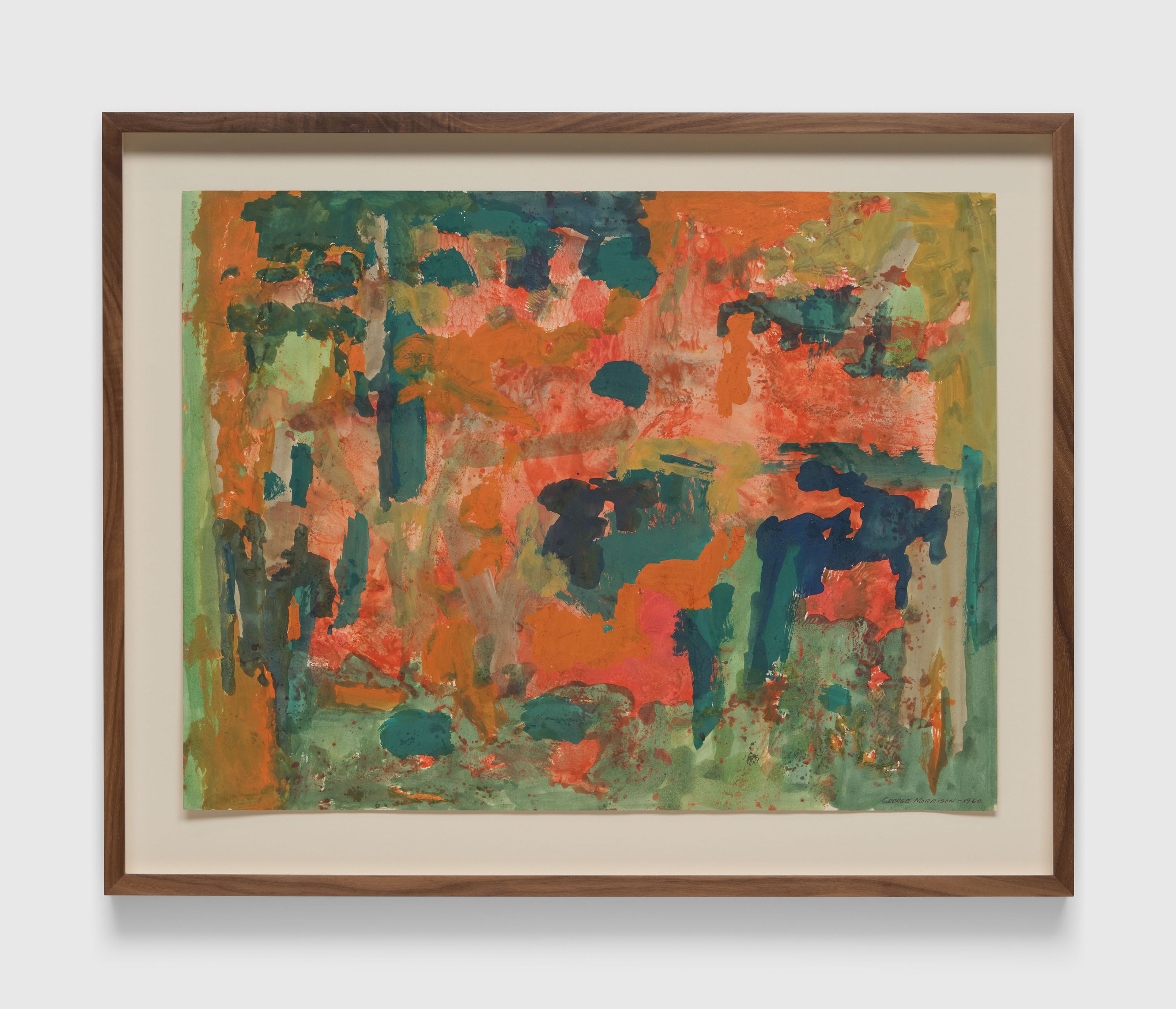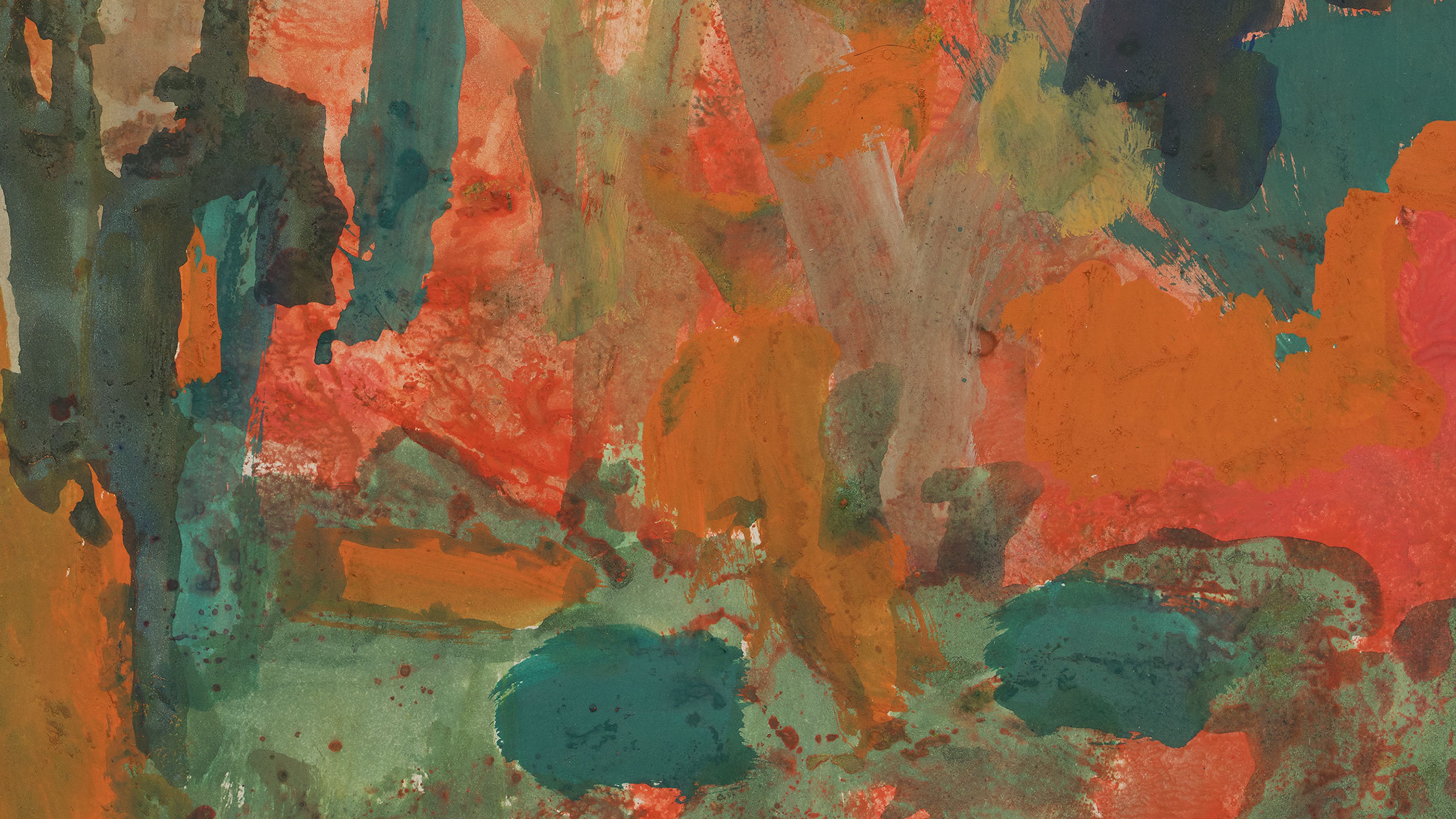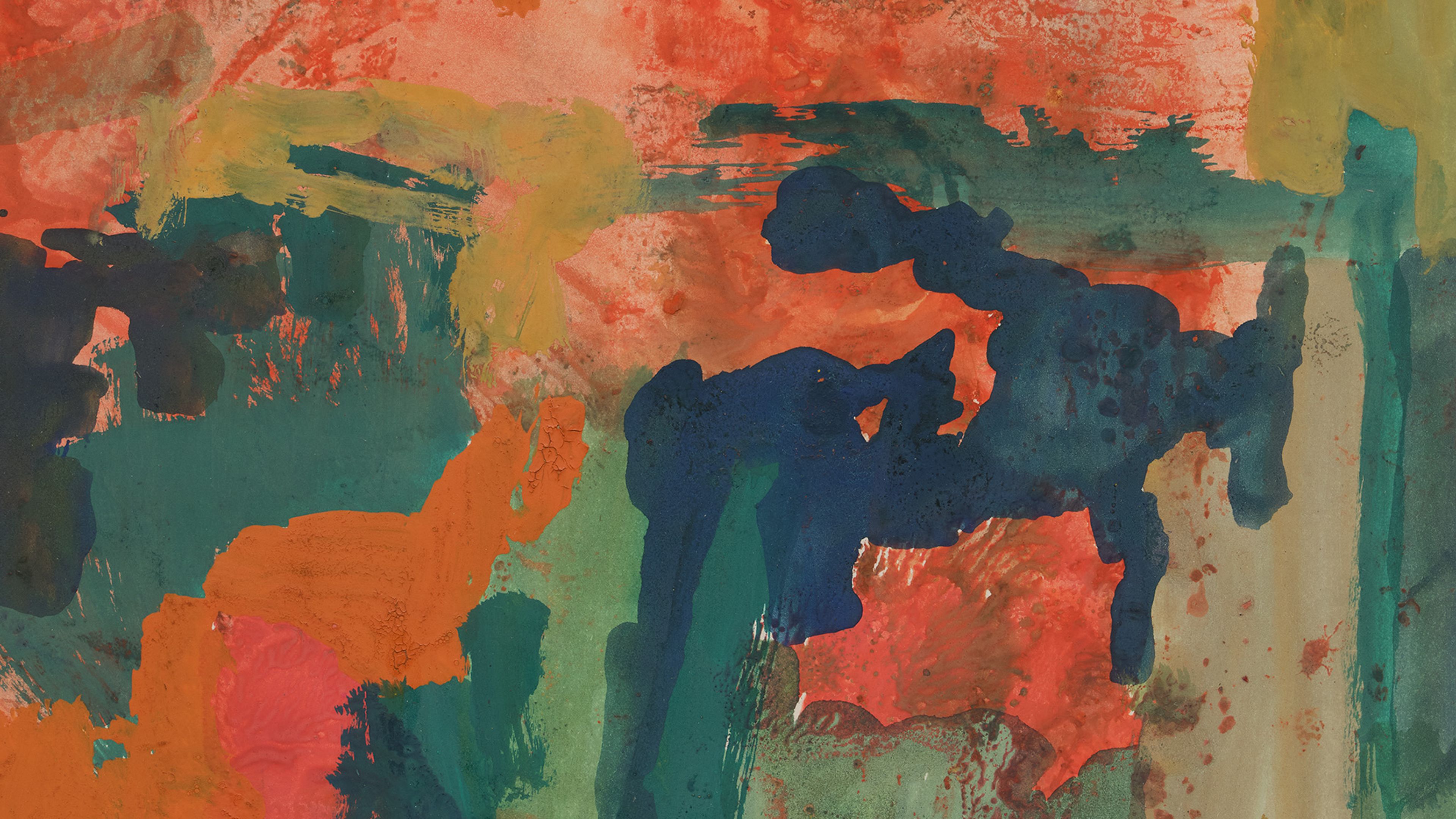George Morrison: Paintings and Works on Paper, 1950s–1960s
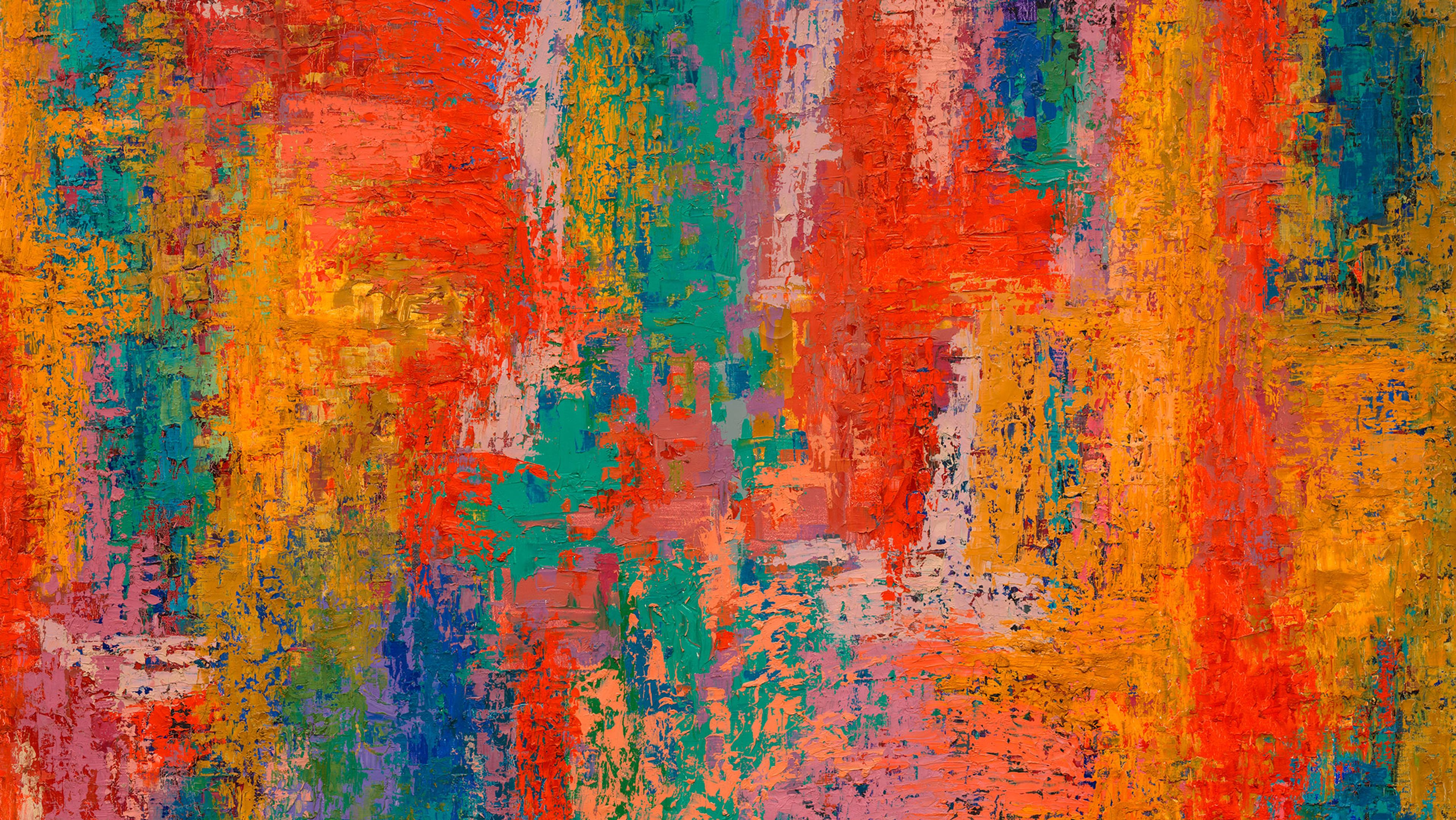
George Morrison, Untitled, 1953 (detail). © George Morrison Estate.
Past
September 12—November 2, 2024
Opening Reception
Thursday, September 12, 6–8 PM
Opening Reception
Thursday, September 12, 6–8 PM
Location
Los Angeles
606 N Western Avenue
90004 Los Angeles CA
Tue, Wed, Thu, Fri, Sat: 10 AM-6 PM
Artist
George Morrison
Explore
“My own sensibilities, the influences, and the attitudes that shaped my art were broad in scope…. I have never tried to prove that I was Indian thru [sic] my art; yet, there may remain deeply hidden some remote suggestion of the rock whence I was hewn, the preoccupation of the textual surface, the mystery of the structural and organic element, the enigma of the horizon, or the color of the wind.”
—George Morrison, artist statement, January 1972
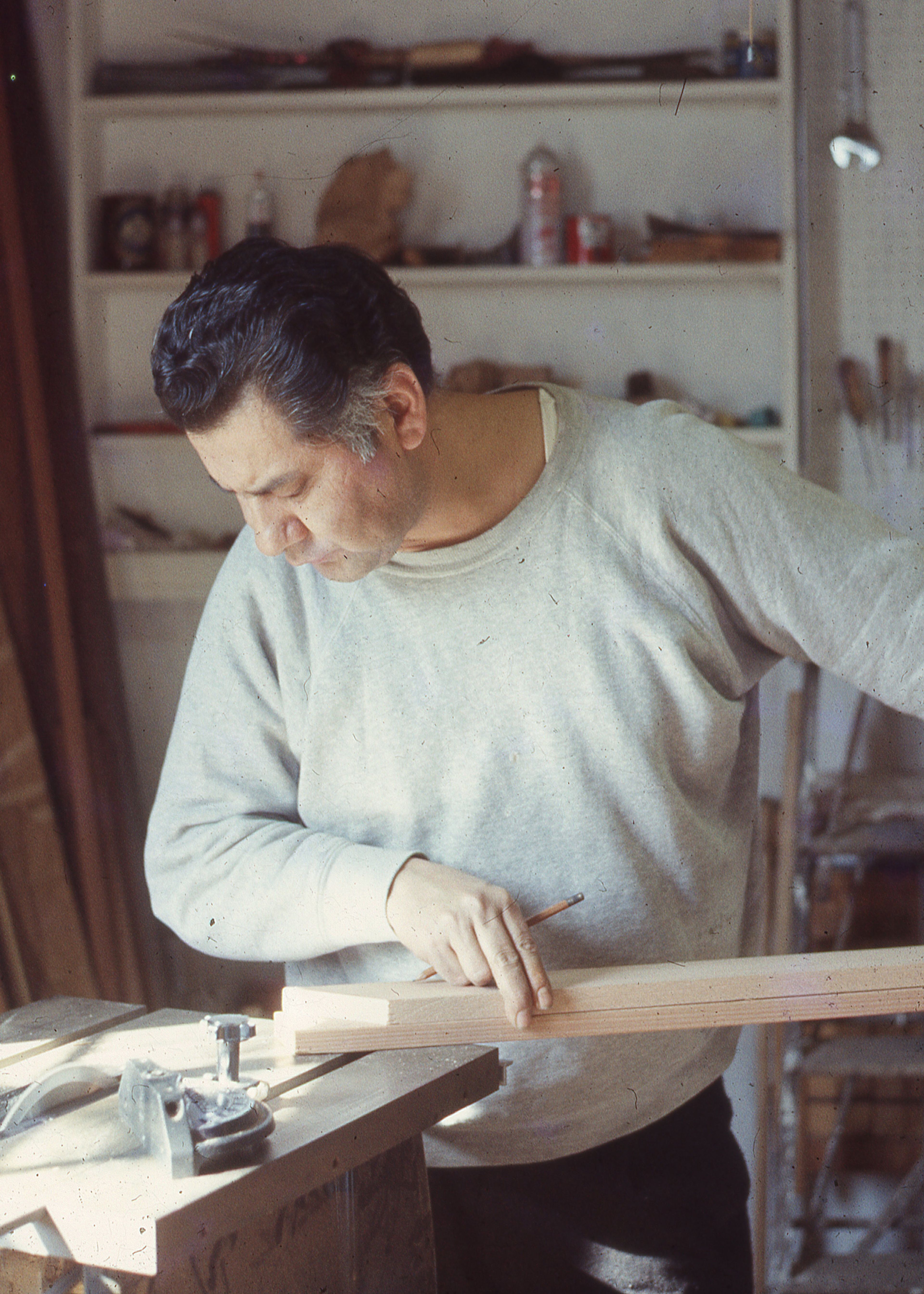
George Morrison in his studio, Provincetown, 1965
Upon moving to New York in 1943 to begin his studies at the Art Students League, Morrison promptly entered the fold of the dynamic downtown art scene, forging close friendships with artists such as Franz Kline, Louise Nevelson, and Herman Cherry, and becoming acquainted with contemporaries including Willem de Kooning and Jackson Pollock. Incorporating aspects of cubism and surrealism, Morrison’s decidedly abstract expressionist style invokes an intuitive subtlety with colors and textures while demonstrating a deep understanding of the interconnected effects of light and form.
“Morrison matured as an artist in New York in a surrealist–abstract expressionist context that valued starting automatically and relying on intuition, improvisation, and chance.... Morrison reinvented himself each and every day in the studio through the act of painting.”
—W. Jackson Rushing Ill, Modern Spirit: The Art of George Morrison, 2013
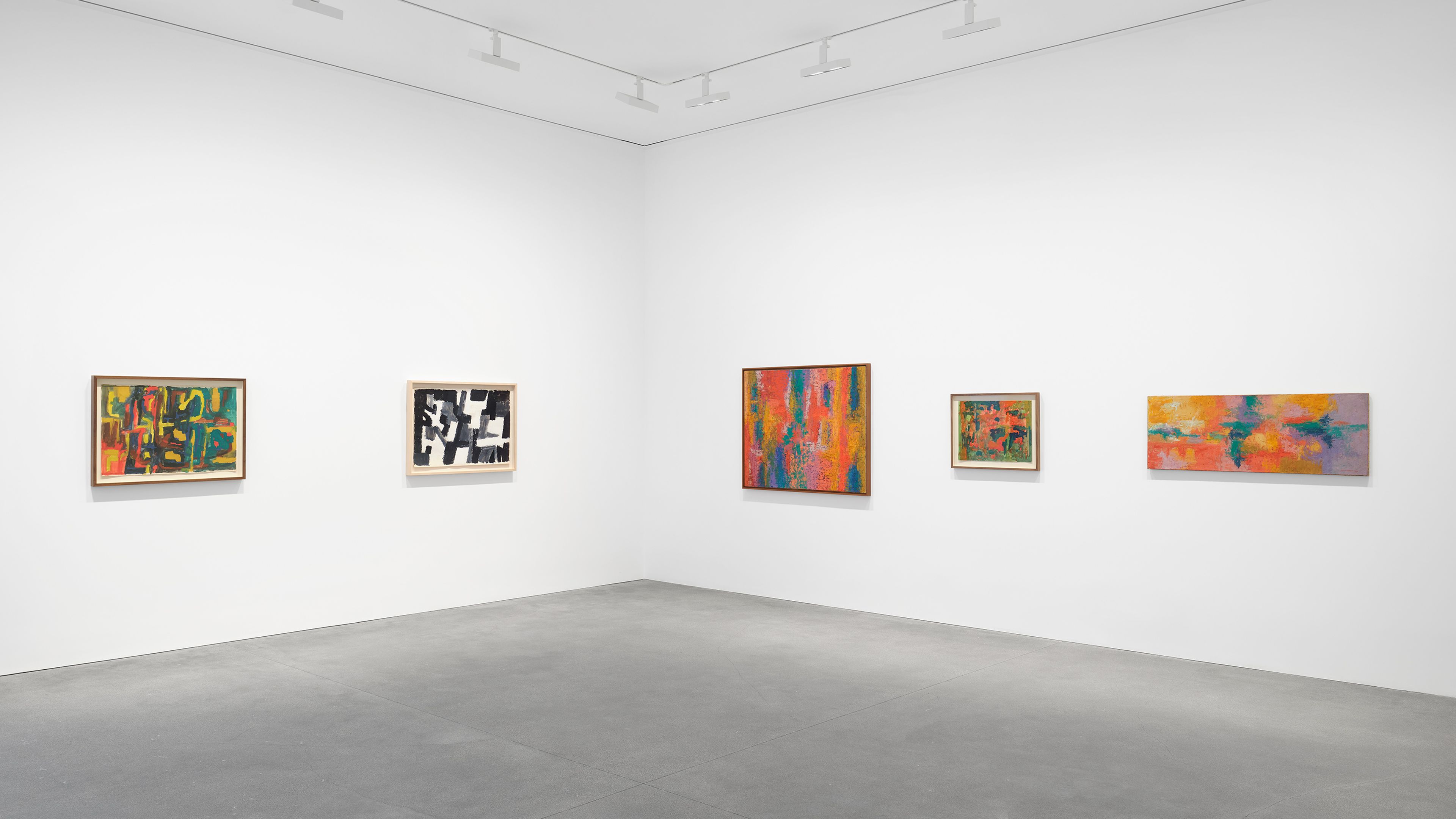
Installation view, George Morrison: Paintings and Works on Paper, 1950s–1960s, David Zwirner, Los Angeles, 2024
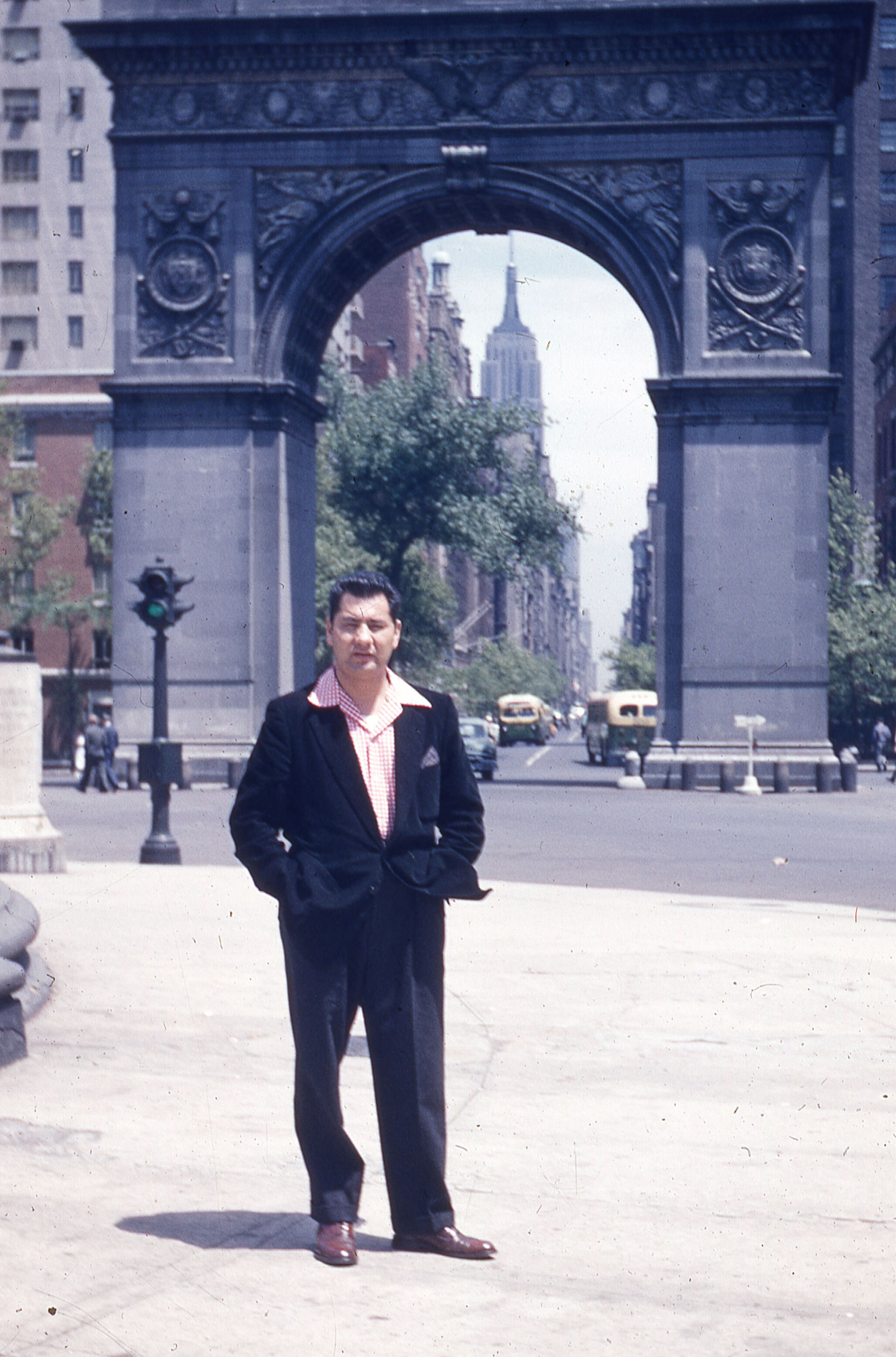
George Morrison in New York, 1954
Morrison had his first solo exhibition, featuring eighteen paintings, at Grand Central Moderns in New York in 1948. He had eight solo shows at the gallery through 1960. During this period, Morrison’s work was seen to defy stereotypes of what Native American art looked like; in 1948, his work was rejected from the Philbrook Art Center, Tulsa, Oklahoma, with the admonition “It was not painted in the traditional manner of your forefathers.”
“I am fascinated with ambiguity, change of mood and color, the sense of sound and movement above and below the horizon line. Therein lies some of the mystery of paintings: the transmutation, through choosing and manipulating the pigment, that becomes the substance of art.”
—George Morrison

Installation view, George Morrison: Paintings and Works on Paper, 1950s–1960s, David Zwirner, Los Angeles, 2024
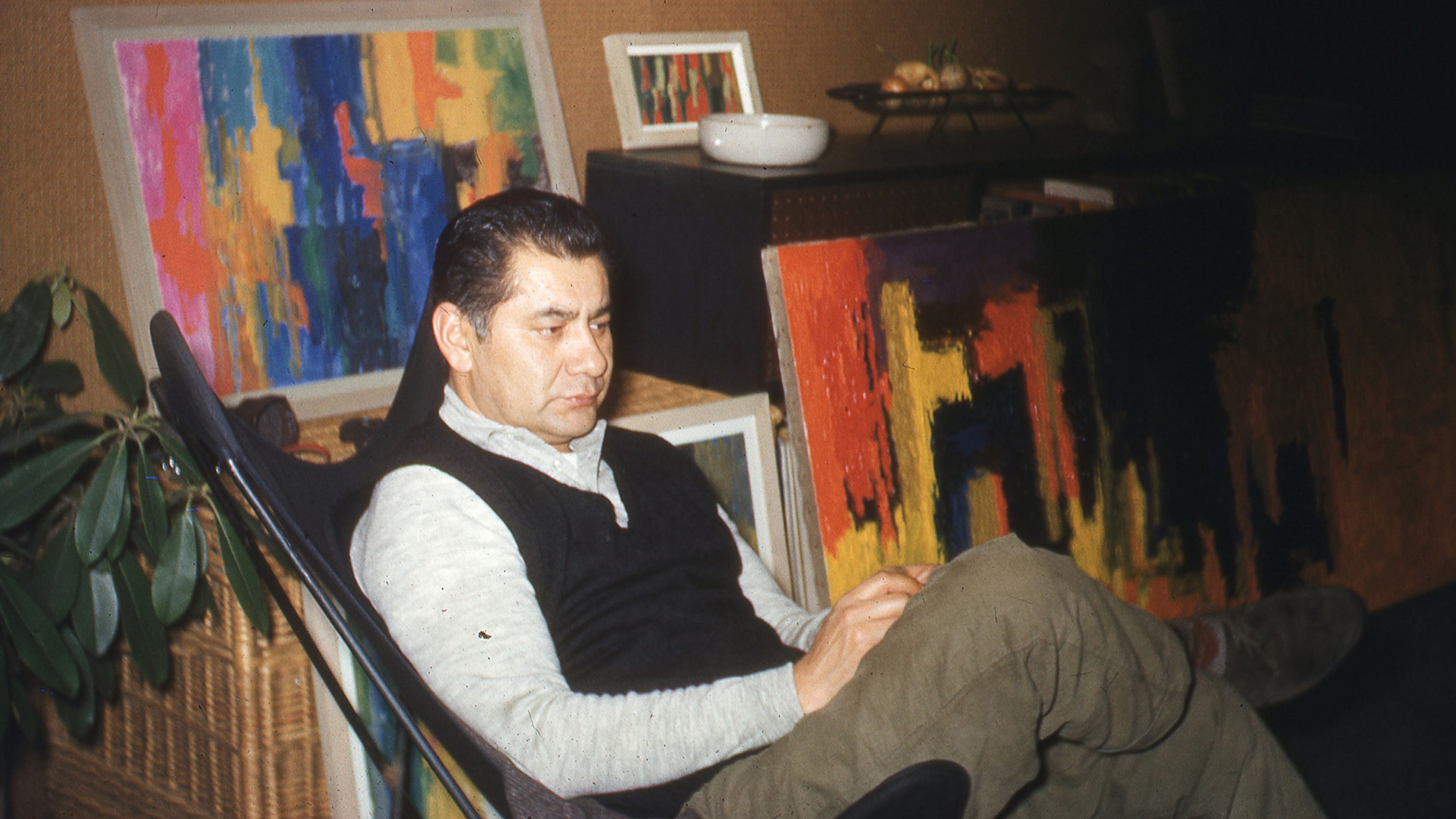
George Morrison, New York, 1957
“I let images emerge from the masses of paint. So there may be hidden associations that become real for me in the final mark.”
—George Morrison
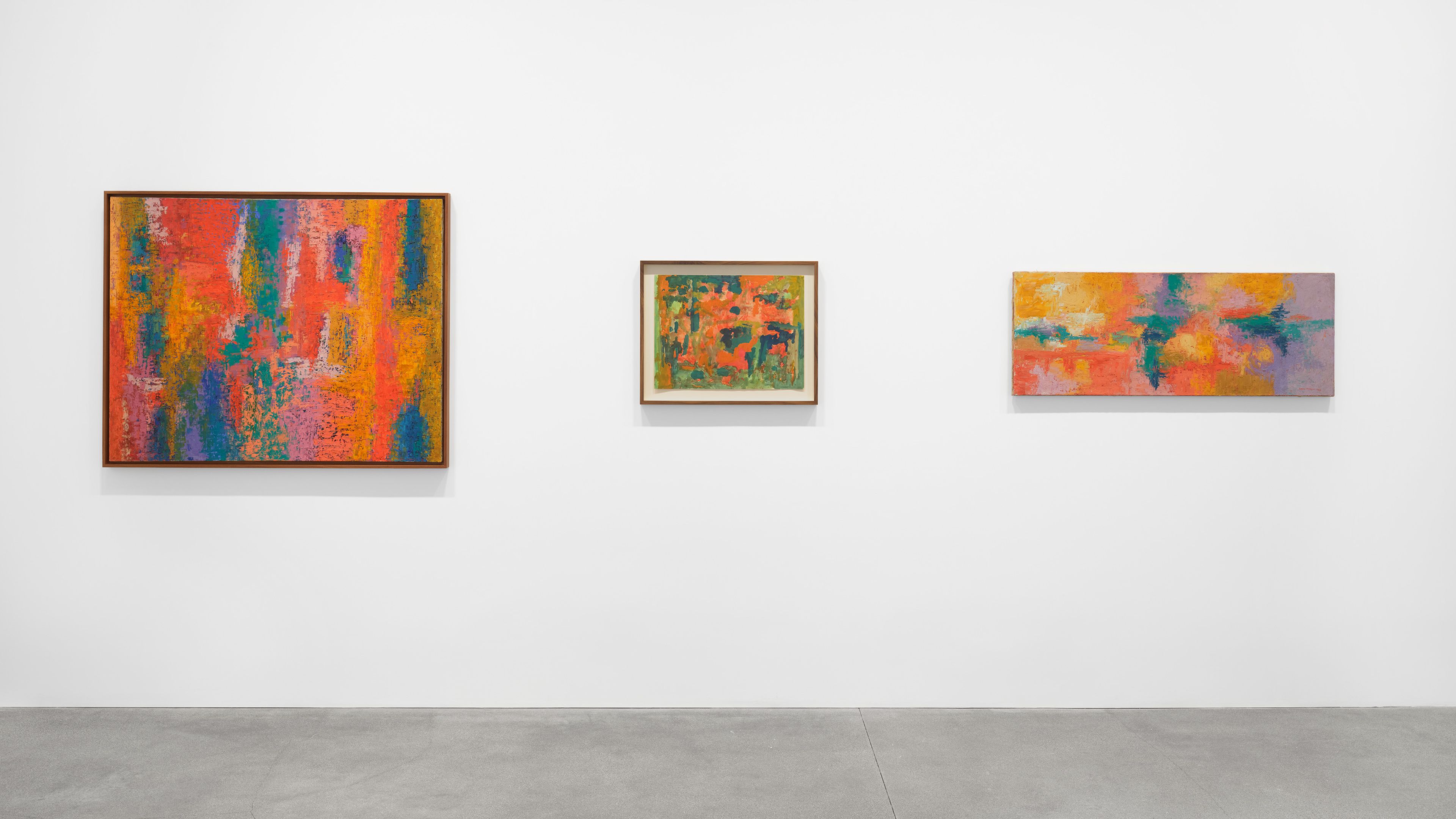
Installation view, George Morrison: Paintings and Works on Paper, 1950s–1960s, David Zwirner, Los Angeles, 2024
“I always see the horizon as the edge of the world. And then you go beyond that, and then you see the phenomenon of the sky and that goes beyond also, so therefore I always imagine, in a certain surrealist world, that I am there, that I would like to imagine for myself that it is real.”
—George Morrison
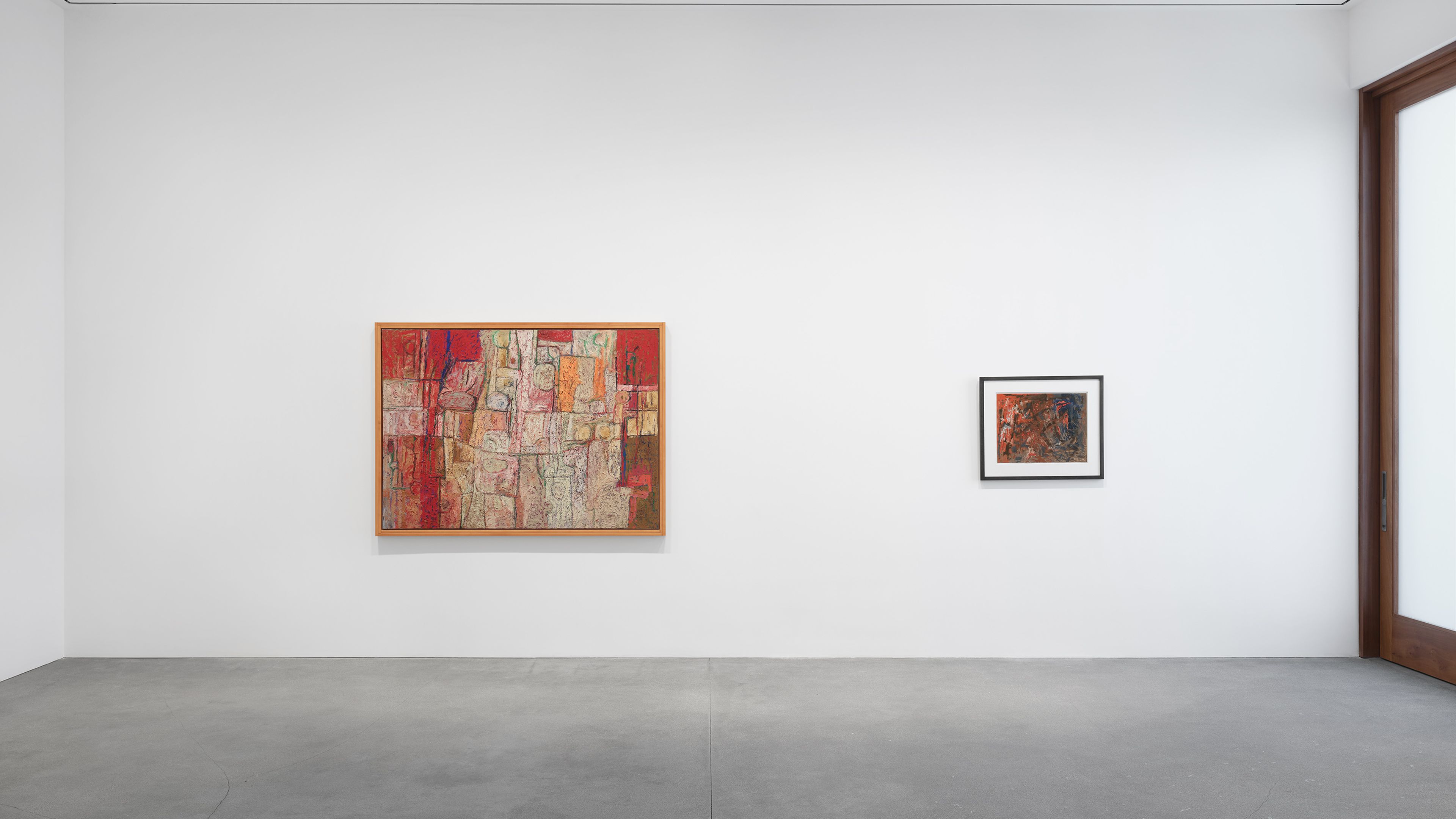
Installation view, George Morrison: Paintings and Works on Paper, 1950s–1960s, David Zwirner, Los Angeles, 2024
Inquire about works by George Morrison
